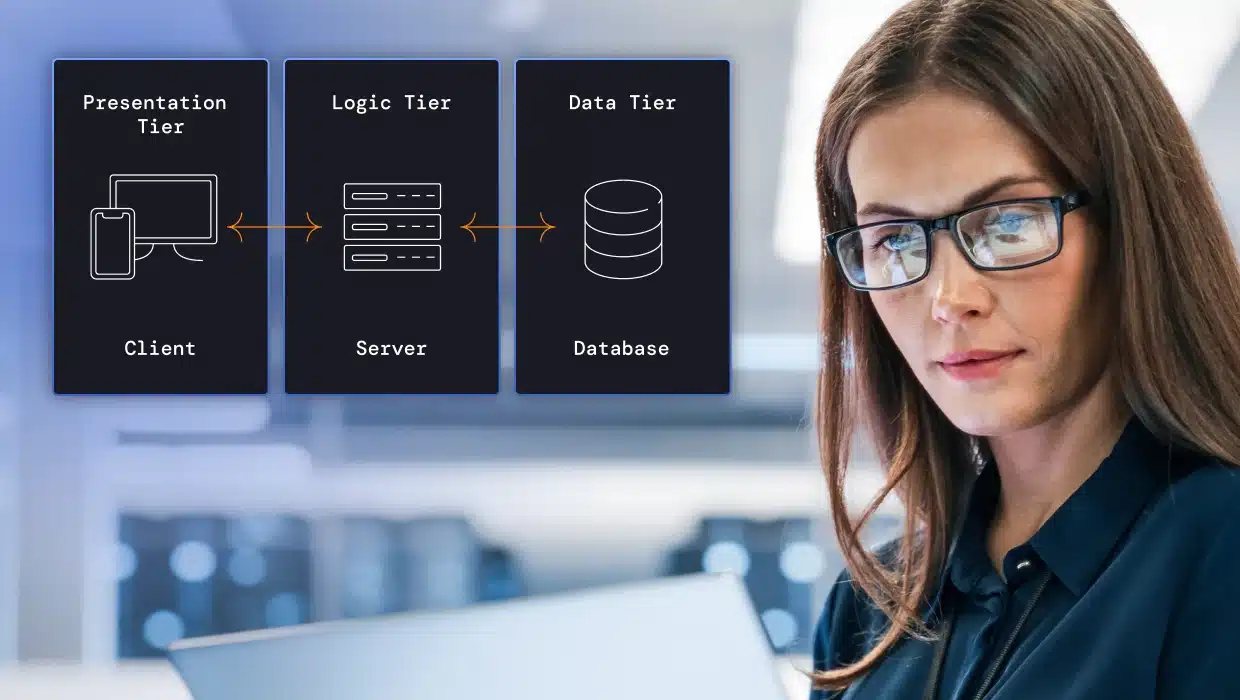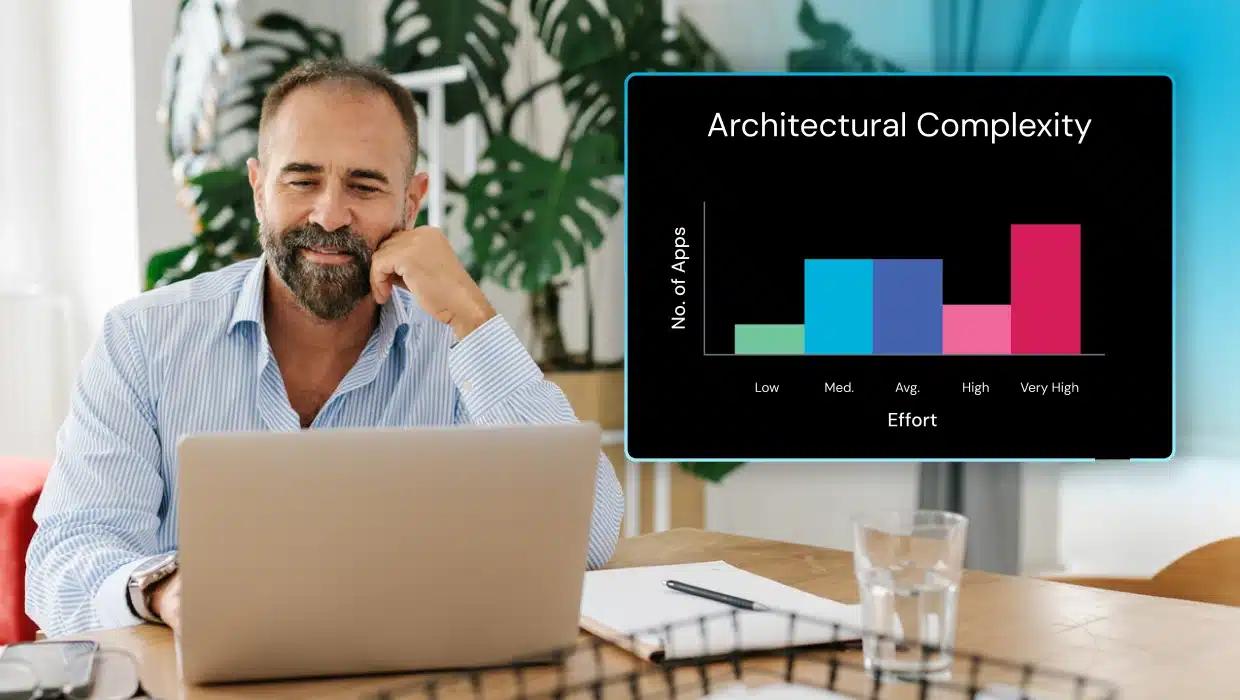Let’s start our comprehensive discussion of software architecture with an overview of the software design process. We’ll uncover key design patterns that define various application architectures and then explore the tools, best practices, and challenges faced in modern software architecture. Along the way, we’ll gain insights into the minds of the software architects who design these systems and help bring them to life.
Introduction to software architecture
Software architecture is the fundamental organization of a software system, encompassing the structures, components, and relationships that define how the system operates and evolves. At its core, software architecture provides a blueprint for software development, guiding how different parts of the system interact to fulfill both functional and non-functional requirements. This foundational organization is essential for ensuring that the software system is robust, scalable, and adaptable to change. By establishing clear architectural guidelines from the outset, development teams can create systems that are easier to maintain, extend, and optimize over time. Ultimately, a well-conceived architecture serves as the backbone of any successful software project, shaping the system’s behavior and supporting its long-term growth.
Importance of software architecture
The significance of software architecture extends far beyond initial design—it is a decisive factor in the overall success of a software system. A thoughtfully crafted architecture directly influences the system’s performance, reliability, and maintainability, making it easier for development teams to manage complexity and deliver high-quality results. Good architecture streamlines software development by providing clear structure and boundaries, which simplifies modifications and the addition of new features. It also enhances scalability and fault tolerance, ensuring the system can handle growth and recover gracefully from failures. Moreover, a strong architectural foundation reduces operational and maintenance costs by minimizing the need for extensive rework and enabling more efficient development processes. In essence, investing in sound software architecture pays dividends throughout the system’s lifecycle, supporting both immediate business needs and future innovation.
Software architecture design
Software architecture design determines how to build a software system that satisfies functional and non-functional requirements, balancing factors such as maintainability, effort, engineering velocity, resilience, robustness, scalability and operational costs. In the design phase, architects specify a multi-faceted blueprint for the software, much like building architects specify plans. This specification includes the software’s components and sub-components, interfaces and boundaries, interdependencies, the underlying technology stack, and the frameworks they use. It also outlines key data and control flows and constraints to address non-functional requirements such as response times, redundancy, and security controls.
Typically, the software development life cycle (SDLC) is carried out iteratively and incrementally on top of the same architectural foundation. As the system evolves with new capabilities and requirements, the architecture should remain stable, providing a consistent backbone for the evolving application.
Architectural changes typically incur considerable costs, as they involve system-wide rewrites with high risk of regressions and unexpected production issues. It’s essential to address requirements and anticipate the consequences of design decisions. Choosing the best software architecture pattern is crucial to the software’s performance, security, maintainability, and cost-effectiveness throughout its development and deployment. The many critical architectural choices made in the design phase justify the investment, as they often determine the final product’s success or failure.
Software architectural design patterns
Architects often rely on established software architecture patterns — proven solutions to common design challenges. These patterns offer blueprints for building adaptable systems while avoiding common pitfalls. Let’s explore some of the most renowned architectural design patterns.
Layered software architectural design
The layered pattern partitions an application into “horizontal layers,” each responsible for a category of functions. For example, the persistence layer manages reading and writing data to persistent storage (e.g., a database), while the presentation layer handles incoming API requests from external clients and routes them to lower layers for processing. Components within a layer may send requests to other components in the same or lower layers, but not to those in higher layers. A common layering for monolithic enterprise applications is the three-layer design, which defines presentation, application (or business) and data (or persistence) as the three standard layers. Some applications use four layers: presentation, business logic, services, and data.
The main advantage of a layered architecture is its separation of concerns via modularity. Developers can focus on building or modifying a component within a layer without considering the implementation details of lower layers or their usage by upper layers. This approach increases engineering velocity, maintainability, reliability and usability.
Let’s look at a typical example of a Java Spring application: “Order Management System” which we use in our vFunction modernization workshops. We call the presentation layer “web” and it contains a set of controller classes that receive REST API requests from clients. The requests are interpreted and processed by calling methods on objects in the service layer which calls APIs of external systems (e.g., to send emails) and uses the object in the persistence layer to read and write data from/to database tables.
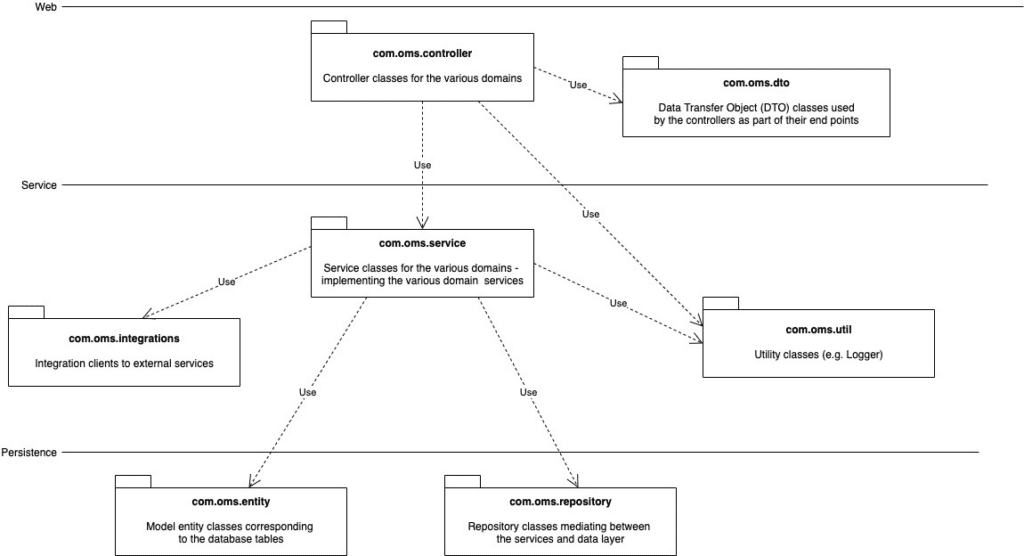
Layers deployed as independent runnable components are called tiers. Deploying layers as tiers can improve scalability and performance through horizontal scaling, where a load balancer manages multiple instances of the entire tier. For example, in a three-layer application with a resource intensive business logic layer, you can convert the layers into tiers and scale it horizontally. The presentation tier routes requests through a load balancer to the business logic tiers which then call the persistence tier.
Microservices in software design and architecture
In microservices architecture, developers build the application as a set of loosely coupled, independently developed and deployable services. Every service has its own APIs and manages a specific functional domain, such as inventory, a service to manage the product catalog, or shipments. Teams develop and deploy these services independently, enabling greater flexibility and scalability.
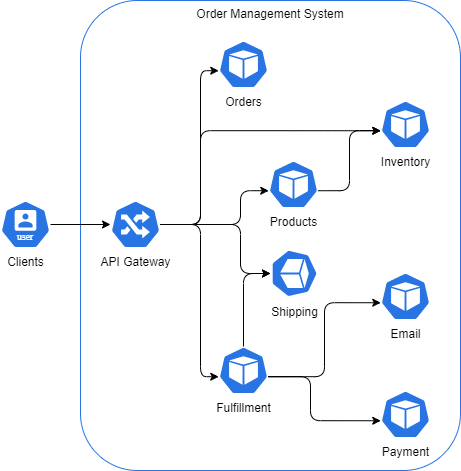
Microservices represent a “vertical separation of concerns” in contrast to the horizontal separation in layered architecture. Key benefits include:
1. Faster delivery and improved productivity.
Teams deliver services independently enabling faster deployment of new domain-specific capabilities.
2. Accelerated development.
Teams handle smaller code bases for quicker development and testing.
3. Efficient, scalability and performance.
Scaling is domain specific, so teams can allocate computational resources where needed most.
4. Resilience.
Services operate independently and are often fault tolerant. If deployed on platforms like Kubernetes, systems can auto-recover from service failures.
5. Technology flexibility.
Every service can use a different tech stack, supporting cloud-native development.
6. Simplified debugging.
Monitoring and auditing individual services make it easier to locate failures.
However, microservices also have drawbacks, including potential data inconsistencies, increased complexity due to distributed systems, network latencies, and end-to-end testing challenges.
A detailed description and comparison with monolithic applications can be found here.
Modular monoliths
A modular monolith is a software design approach where a monolithic application is divided into distinct, self-contained modules. Each module represents a specific functional domain and encapsulates its logic, data, and behavior, while the entire system is deployed as a single unit. The application is “vertically sliced” to implement a functional domain, much like microservices. This approach combines the simplicity of a monolith with the organization and separation of concerns found in microservices, without the added complexity of distributed systems.
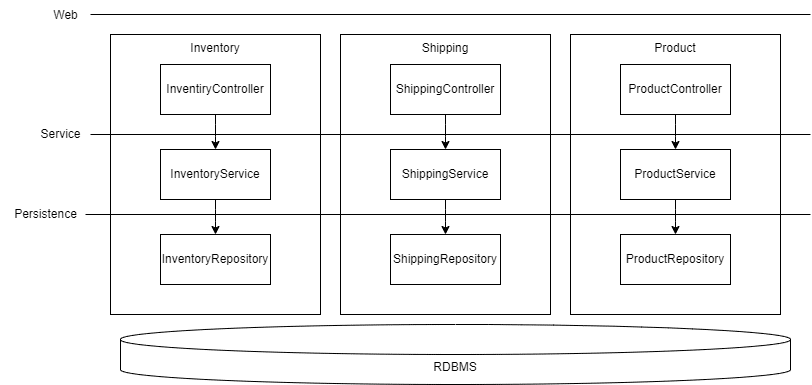
Event-driven software architecture
Event-driven architecture (EDA) triggers behaviors and interactions through events, enabling flexible modification of system behavior. An event is a “significant occurrence” which might be a message reception, a user action, sensor reading, etc. In this architecture, producers generate and publish new events, event routers filter and push events to the appropriate components called “consumers” which perform the behavior as a reaction to the event.
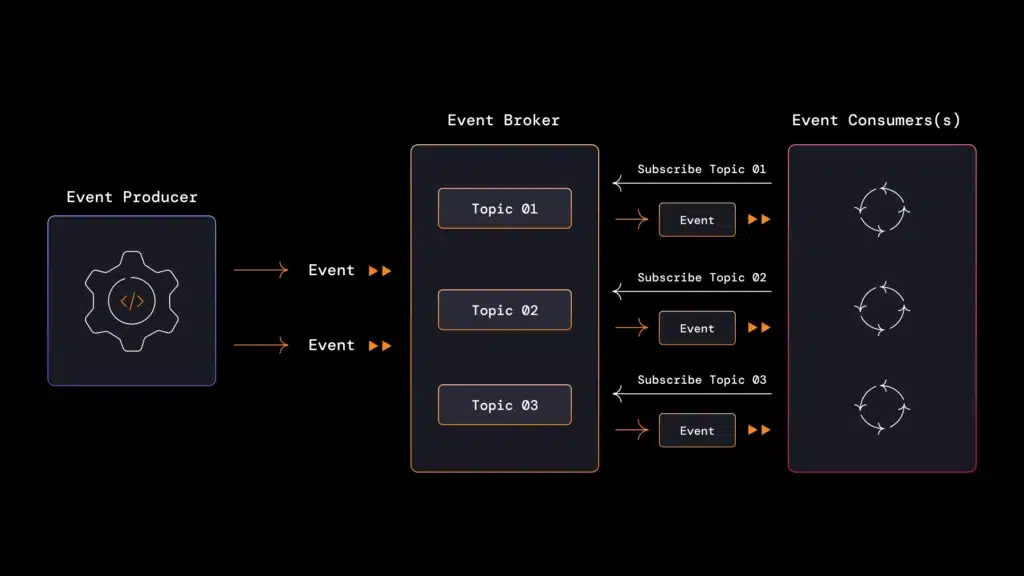
To illustrate EDA let’s look at our Order Management System example. In a traditional architecture, creating a new order requires calling APIs to log the order, check inventory, charge the client, and more. In contrast, an EDA system publishes an “Order Created” event with the order details to an event broker. All components (payments, shipping, and inventory) receive this event and act on it independently.
EDA further decouples services in a microservices architecture, and is widely used in real-time systems such as IoT systems, chat applications, etc. and in monitoring and analytic systems, including anomaly detection. However, EDA adds complexity and overhead by mandating an event broker such as Apache Kafka, Active MQ, etc. and makes the overall flows harder to trace and debug.
Although not an exhaustive list of software architecture patterns, these cover the bulk of systems most software architects will design and interact with. Despite choosing a specific pattern, architects must follow best practices to guarantee the software’s reliability and scalability. Next, let’s take a look at these best practices.
Best practices in software architecture
Building software that lasts requires following best practices for quality, maintainability and scalability, as well as applying strategic thinking to ensure architectural decisions align with business goals. Here’s how to build software that stands the test of time:
Design for modularity. Embrace vertical and horizontal separation
Break your system into smaller, independent modules or services, each focused on a well-defined functional domain. Within every module or service, organize the components into layers. For a monolithic application, choose a modular monolith design. For a microservices architecture, split the components within the service into layers such as API, service and persistence.
Another type of separation is avoiding coupling between services or modules. Ensure flows are unidirectional, avoiding circular dependencies where A calls B and B calls A. Additionally, minimize cross-service or cross-module flows for a single business function to improve resilience as well as performance in the case of microservices.
Plan for the future
Design your architecture to handle heavier workloads, adopt new technologies, and adapt to evolving user behaviors. For example, even if your application is meant to run on-prem, avoid barriers to future cloud migration, like local file storage. Opt for standardized tools instead of vendor-specific ones like stored procedures, or application server specific features or code generation from vendor specific languages. Plan for growth with horizontal (add more servers) and vertical (upgrade existing hardware) scaling for the future.
Implementing software architecture best practices
Implementing software architecture effectively demands a collaborative approach and a dedicated architect to steer design decisions and maintain best practices. Utilizing established architectural patterns like microservices or event-driven architecture ensures consistency and problem-solving. Essential to this process is maintaining thorough documentation for clarity on design and system structure, enabling easier maintenance. A strong testing strategy, integrating automated and manual testing, detects issues promptly. Continuous integration and delivery (CI/CD) pipelines streamline and speed up development.
Avoid accumulating technical debt
As the system matures to support more capabilities, ensure the architecture adapts to changing requirements and maintains quality. Neglecting this leads to accumulating technical debt, which slows engineering velocity and degrades quality, eventually requiring partial or complete system rewrites.
To prevent this, regularly assess and address technical debt as part of the SDLC. Prioritize issues, schedule their remediation, and integrate this process into your development routine.
Scaling in software development architecture
Scalable systems need architectures that support expansion through:
– Horizontal scaling—adding servers or nodes to distribute load, and
– Vertical scaling—enhancing existing hardware or software capabilities like memory and CPU.
Microservices and cloud-native architectures excel in vertical scaling due to their flexibility. Load balancing is crucial for managing traffic distribution across servers, enhancing performance, and ensuring high availability, often facilitated by reverse proxies or service meshes for optimal fault tolerance.
Security in software architecture design
To ensure software security, integrate security measures into the architecture from the outset. This means implementing robust authentication and authorization mechanisms, such as multi-factor authentication and role-based access control, to verify user identities and control access to resources. A defense-in-depth approach with multiple security layers like firewalls, intrusion detection systems, and encryption is essential to protect against a wide range of threats. In a microservices architecture, securing communication between services is critical, with API gateways, service meshes, and mutual TLS authentication playing key roles.
Tools and techniques for software architecture
You don’t have to build software architecture from scratch. A rich ecosystem of tools and techniques exists to help design, visualize, and manage software systems. Here are a few examples:
Software architecture modeling tools
Visualization is key to understanding complex systems. Software architecture tools, specifically modeling tools, help architects create visual representations of software architecture to communicate and analyze.
UML (Unified Modeling Language) is a standard diagrammatic language that provides a visual blueprint for software systems. It uses class, sequence, and component diagrams to illustrate system relationships and interactions, making architecture easier to understand and communicate. With 14 diagram types, UML offers diverse views of a system model. Tools like Microsoft Visio, Plant UML, Magic Draw, and Rhapsody support UML diagram creation, providing powerful platforms for visualizing architecture. Advanced UML tools such as Magic Draw and Rhapsody maintain consistency across diagrams, enforce rules and support simulations and analytics. While UML is widely used in regulated industries, its complexity and subtleties can make it challenging to master.
A more lightweight diagrammatic language is C4 which only has four types of diagrams (Context, Container, Component and Code). This language was developed by Simon Brown. Some tools, like PlantUML, support both UML and C4 diagrams. Another C4 modeling tool is IcePanel, which is a collaborative tool that helps developers create and share interactive diagrams, enhancing team communication and understanding.
While modeling tools provide the means to design software architecture, they verify that the implementation satisfies the architectural model. Some UML tools generate code from UML models, but this approach adds overhead, requiring teams to constantly update the model instead of directly modifying the code. Although many vendors promoted code-generation its complexity and additional effort led to limited adoption.
Other tools parse code to generate visual diagrams, such as UML class diagrams. While helpful for communication, these tools provide only a partial view, failing to verify alignment with the overall architectural design or identify architectural issues.
Monitoring and optimizing software architecture
Monitoring and optimizing software architecture is crucial for maintaining system health and performance. AI tools like vFunction visualize your architecture in runtime, identifying bottlenecks and optimizing for scalability and efficiency. vFunction helps maintain the health of both monoliths and microservices by providing deep architectural insights, automated analysis, and actionable recommendations. It identifies architectural drift and structural issues, such as technical debt and overly complex flows, as the architecture evolves, enabling teams to address them proactively. With real-time visualization and governance capabilities, vFunction helps maintain resilient, scalable architectures that stay aligned with best practices, ensuring applications remain high-performing and easy to manage over time.
Communication in software architectural design
Effective communication is key to successful software architecture. Architects must communicate their design to stakeholders, developers, and other team members clearly using concise language, visual aids, and comprehensive documentation. Tools like wikis, shared workspaces and design reviews can help with communication and collaboration.
Challenges in software architecture
Choosing and specifying an architecture is a non-trivial task with long-lasting implications and should ideally be done and reviewed by a team, not by a single person. Here are a some common challenges architects are likely to face:
1. Understanding the environment the application operates in
Business applications operate in complex environments and need to integrate with other systems.
Applications must integrate with existing systems through APIs, message queues, event buses, or specialized protocols while considering constraints and evolving infrastructure.
2. Modernizing legacy applications
Replacing legacy systems requires a deep understanding of their functional domains, interfaces, and data usage. Techniques like Domain-Driven Design (DDD) and Design Thinking can help, but insights into the existing system are critical. vFunction aids modernization by providing detailed insights and leveraging AI to analyze and optimize legacy architectures.
3. Non-functional requirements
Non-functional requirements may not be apparent during the analysis and design phase of the application — you may need to pivot after deploying to production. Scalability, response times, security, and operational costs often emerge post-deployment. Thoughtful design must happen before and as the system evolves, including mechanisms like redundancy, monitoring, and logging to address failures and prevent pitfalls such as microservices-related complexity.
4. Choosing the right technology stack and platform dependence
Architecture needs a balance between mature technologies that might be discontinued and emerging technologies that may be error prone and don’t have a well established user community. Design the architecture to be platform independent as much as possible by scoping the platform specific parts in well defined layers.
5. Defining functional domains
The various components of an application should align with functional domains, balancing granularity with simplicity. Overly complex topologies or shared resources can cause data integrity (race conditions) and performance issues, so precise scoping of domains is key for good architectural design.
6. Maintaining good architecture over time
Evolving applications often accumulate technical debt from delivery compromises or inconsistent implementation. Architects must monitor development and ensure adherence to the design. vFunction helps by providing architectural observability, identifying drift from the baseline, and addressing issues before they escalate or become so challenging that the application needs to be rewritten.
Future trends in software architecture
Software architecture evolves rapidly, requiring developers to stay current with emerging practices and technologies. Here are key trends shaping the future:
1. Serverless architecture
Serverless computing abstracts infrastructure management, enabling developers to focus on code and business logic. It offers scalability, cost-efficiency, and faster deployments but requires expertise in cloud platforms and comes with challenges like vendor lock-in, cold starts (latency in initializing functions), and debugging.
2. AI integration
AI, including Large Language Models (LLMs), is transforming architecture with tools for code generation, testing, and optimization. While promising, architects must address challenges like algorithmic bias and data privacy.
3. Edge computing
By processing data closer to its source, edge computing reduces latency for real-time applications like IoT and analytics. However, it introduces complexities in managing distributed infrastructure, ensuring data consistency, and security at the edge.
4. Increased emphasis on security
Architectures must embed security at every layer as cyber threats rise. Trends like DevSecOps (part of the “shift-left” movement, integrating security into the development process) and zero-trust (requiring strict identity verification, continuous authentication, and least-privilege access) are becoming critical security models throughout architecture and design.
5. Sustainable software engineering
Growing ecological concerns push architects to design energy-efficient, resource-optimized applications that minimize environmental impact, especially in AI-driven systems. Ecological advantages can be integrated from the outset, shaping how software is designed, coded, and deployed. Software architects are increasingly adopting cutting-edge trends at the heart of their work, which are becoming more accessible over time.
How vFunction helps with software architecture
vFunction is an AI-driven architectural observability platform that monitors software architecture, detects architectural drift and provides actionable tasks (TODO’s) for developers to address architectural issues.
The platform analyzes distributed and monolithic applications. Here are several ways vFunction can assist you in enhancing software architecture management, boosting developer productivity, and delivering superior software.
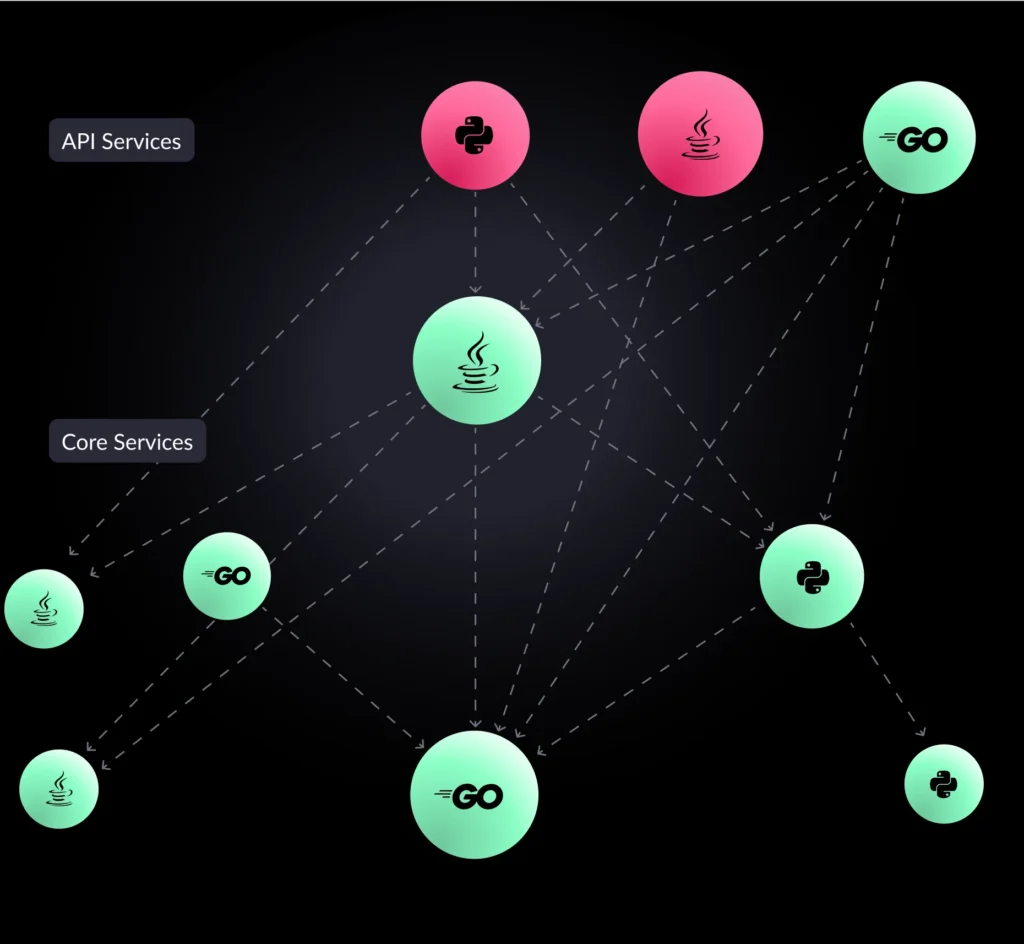
Architectural observability
vFunction provides a real-time, visual view of software architecture. It uses patented static and dynamic analysis methods powered by AI to automatically untangle unnecessary dependencies across business domains, services, database calls, classes, and other resources. This visibility helps architects and developers understand interactions, identify bottlenecks, and plan changes effectively.
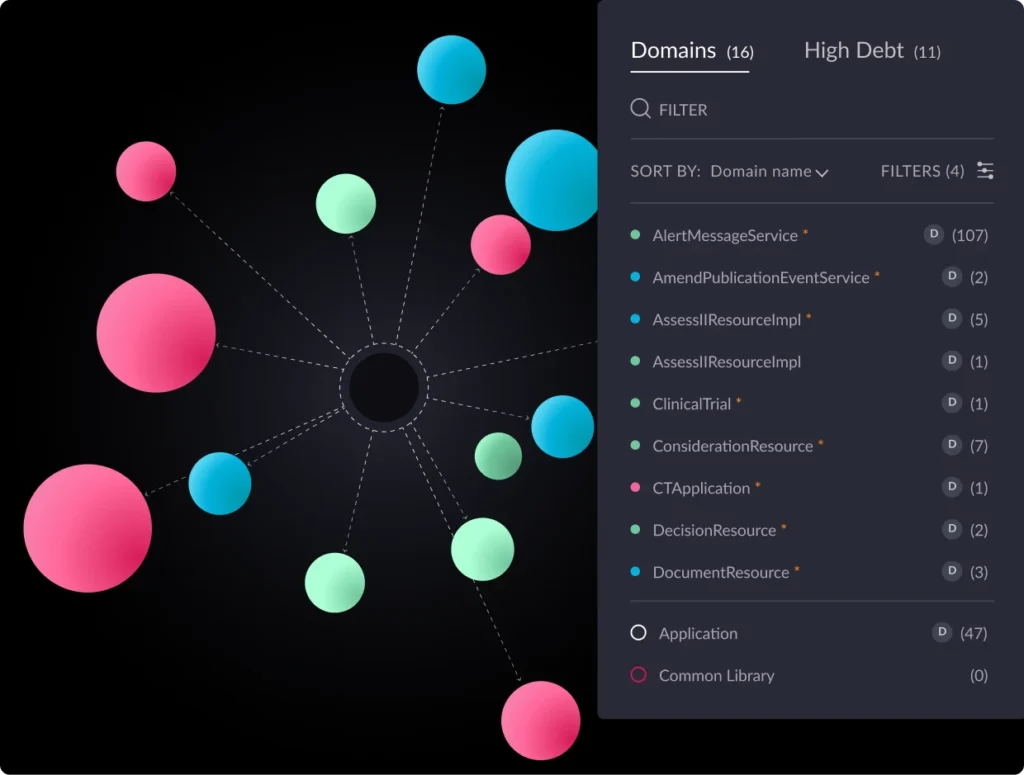
Automated refactoring and decomposition
vFunction automates the decomposition of monolithic applications into microservices by identifying and extracting business capabilities. This breaks down complex, tightly coupled systems into smaller, more manageable, and independently deployable units. Its refactoring solutions help architects and developers scale more effectively and achieve better application performance.
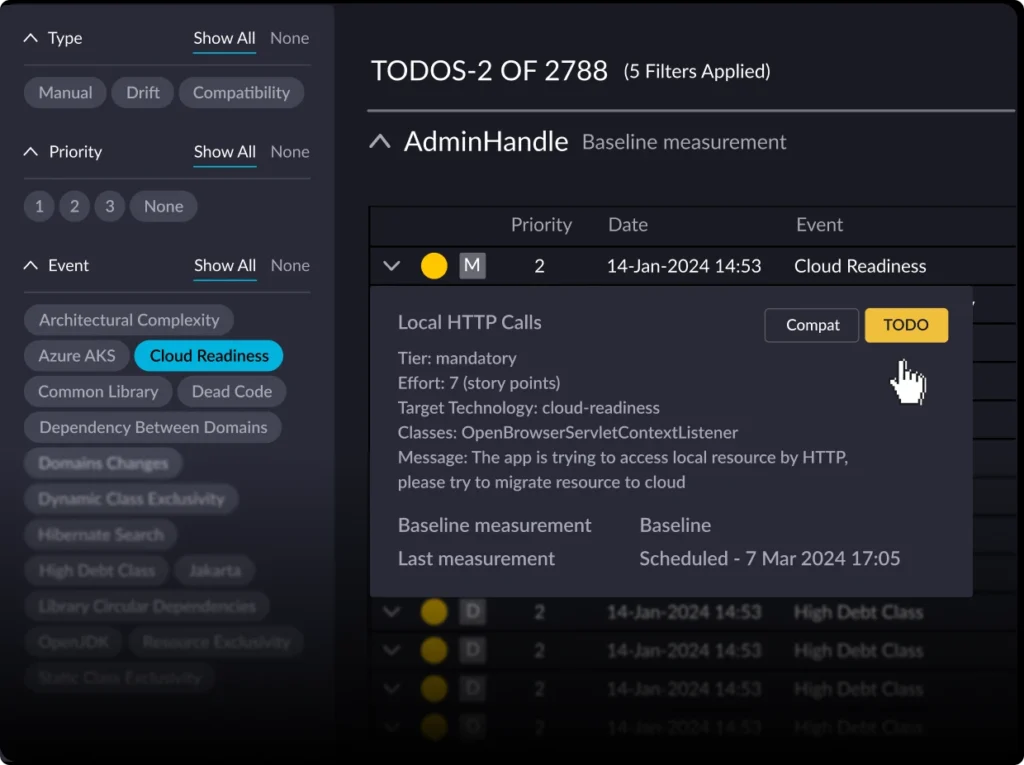
Technical debt management
To address accumulating technical debt, vFunction continuously tracks architectural events, such as new dependencies, domain changes, and increasing complexity over time. The vFunction platform measures an application’s technical debt using defined architectural issues, allowing architects and engineers to pinpoint areas for optimization.
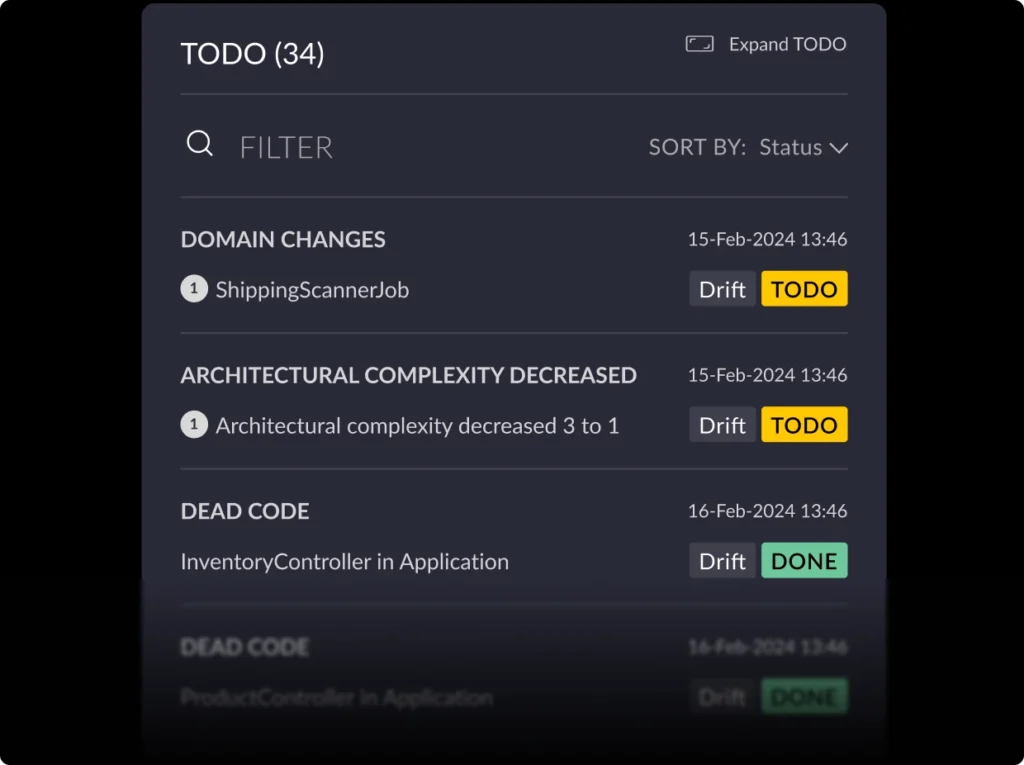
Microservices governance
vFunction’s architecture governance sets guardrails that empower teams to maintain control over their microservices architecture by providing real-time visibility, automated rule enforcement, and actionable insights. It helps prevent architectural drift, microservices sprawl, and technical debt by monitoring service boundaries, identifying complex flows, and ensuring compliance with best practices.
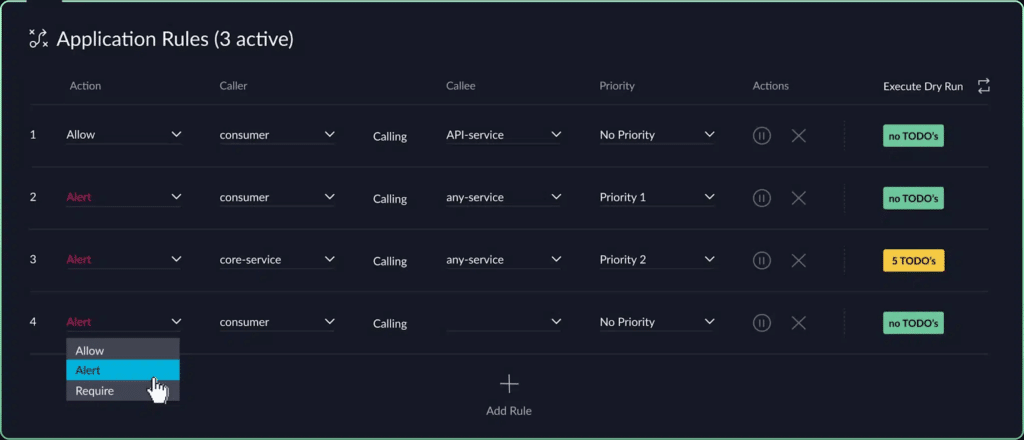
Final thoughts
Software architecture is critical for creating scalable, secure, and maintainable applications. By leveraging proven patterns and best practices, companies can design flexible, high-performing systems that seamlessly adapt to evolving demands.
With vFunction’s architectural observability platform, engineers and architects can transform legacy applications into cloud-native architectures in weeks rather than months or years. Beyond modernization, vFunction empowers teams to manage and govern microservices by offering real-time visibility, monitoring architectural drift, and enforcing best practices to prevent sprawl and complexity. By prioritizing software architecture, organizations ensure their applications remain resilient, scalable, and prepared to meet future demands.
Contact us to discover how vFunction can help manage and modernize your software architecture to support best practices and better business outcomes.




